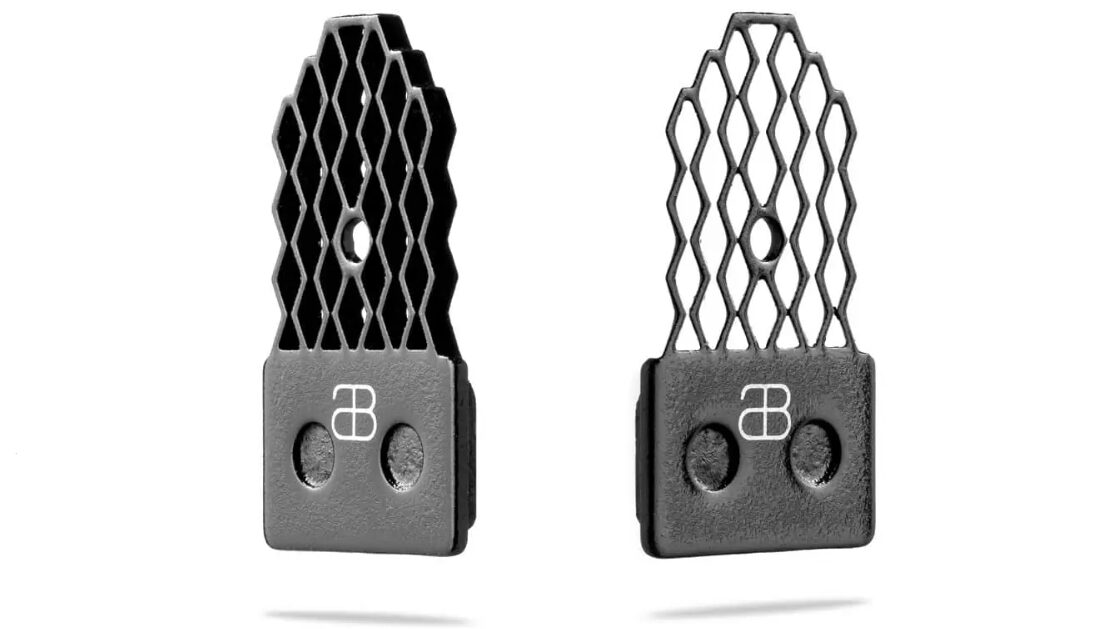Given the scarcity of disc brake pads at the moment it’s certainly heartening to see a new option come to market as this will hopefully at least increase the collective ability to come to a halt at will. Brake pads, rare or not, are usually some of the least glamorous parts of a bike, and often when replacing them a lot of us are guilty of just putting in what’s available or cheap to get the job done.
AboluteBLACK though has brought a new brake pad to the market, the Graphenpads, with options compatible with Shimano road, mountain bike and SRAM calipers, and with new material tech and a cooling fin design that’s reminiscent of industrial fencing. There are some bold performance claims, and an even bolder price tag – Would you drop a cool hundred quid on a full set of pads?
Graphene to replace copper
Disc brake pad compounds, in the collective consciousness, are usually defined as either sintered or organic. Very little attention is actually paid to the composition of the compound, but in order to understand what’s new about these pads, we must delve beneath the murky surface of resins and friction modifiers.
In general, a brake pad is made up of things that are grippy, things that are slippy, and things that hold the pad together. Too many grippy compounds (like ceramic particulates) and the pad will be too grippy and too abrasive on your rotors, especially as the binder resin is usually pretty grippy in its own right. In order to bring the pad compound back to an optimum performance ‘friction modifiers’ are added (slippy particles, in effect); it’s a little bit like taking spirit straight from a still and cutting it with some spring water to make it palatable vodka rather than just pure ethanol.
The majority of pads use copper dust as their friction modifier, but given that California has decided to ban the use of copper dust beyond 2025 due to toxicity to aquatic life, absoluteBLACK has instead opted to include graphene particles. These particles not only modify the friction to the desired level, but given their propensity for thermal conductivity, they improve the pad heat dissipation by conducting the heat energy from the braking material into the pad backer plate, which itself is also coated in a graphene compound to further enhance cooling.
Furthermore, metals, despite seeming impenetrable, are slightly porous on the micro-scale. These Graphenpads have an added benefit over and above the standard claims of improved braking…
Click Here to Read the Full Original Article at CyclingNews RSS Feed…

